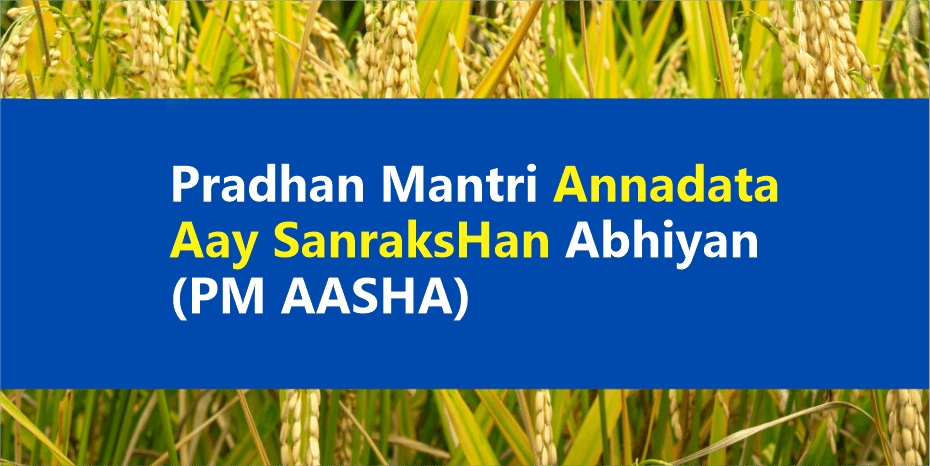PM-AASHA- 2.0
Relevance
- GS Paper 2 Important aspects of governance, transparency and accountability, e-governance, applications, models, successes, limitations, and potential.
- Government policies and interventions for development in various sectors and issues arising out of their design and implementation.
- Tags: #pmaasha #scheme #currentaffairs #upsc
Benefits of PM-AASHA
The PM-AASHA Scheme offers several advantages, including:
- Innovative MSP Enhancement: PM-AASHA introduces a creative MSP-plus approach to address the challenge of inadequate remunerative prices for farmers.
- Comprehensive Solution: This scheme’s three distinct components work in tandem to bridge gaps in crop procurement and compensation mechanisms, offering a holistic solution.
- Rural Economic Revitalization: By increasing farmers’ income, the PM-AASHA scheme contributes to the revitalization of the rural economy, providing a significant economic boost to agricultural communities.
- Crop Diversification and Resource Management: The scheme promotes crop diversification and helps alleviate soil and water stress by enhancing oilseed prices, encouraging farmers to diversify their crops.
- Efficiency and Elimination of Physical Procurement: With the introduction of PM-AASHA, the need for physical procurement, storage, and disposal of crops is eliminated, streamlining the process and reducing associated logistical challenges.
- Price Stabilization: It helps stabilize crop prices, ensuring that farmers receive a minimum guaranteed price for their produce, reducing income uncertainty.
- Income Security: Farmers benefit from income security as they are assured of receiving remunerative prices, protecting them from market volatility.
- Rural Economic Development: The scheme contributes to the growth of the rural economy by increasing farmers’ income, leading to greater rural prosperity.
- Reduced Dependency on Middlemen: Direct procurement and payment to farmers reduce their dependence on intermediaries and ensure they receive a fair share of the profits.
- Food Security: Procured food grains are utilized for various welfare programs and food security initiatives, ensuring a consistent food supply for the nation.
- Market Stability: The scheme helps mitigate price fluctuations and instability in the agricultural market, benefiting both farmers and consumers.
- Empowerment of Small Farmers: Small and marginal farmers, who constitute a significant portion of India’s agricultural population, benefit from the scheme’s focus on their welfare.
Challenges to PM-AASHA
- Weak Procurement Infrastructure: The PM-AASHA Scheme faces the challenge of not significantly strengthening the procurement infrastructure in the country, particularly when compared to the well-established infrastructure for wheat and rice. This could hinder the effective implementation of the scheme for other crops.
- Low Awareness of MSP: A study conducted by K.S. Aditya in 2017 revealed that only 24% of households were aware of the Minimum Support Price (MSP) in place. This lack of awareness can hinder farmers from fully utilizing the scheme.
- Limited Procurement Beyond Wheat and Rice: Apart from wheat and rice, the quantity of produce procured by designated state agencies has been relatively limited. This limited procurement has resulted in low awareness and utilization of MSPs for other crops.
- Based on a survey conducted during the 70th round in 2013 by the National Sample Survey Office (NSSO), it was found that merely 6% of farmers could sell their agricultural produce at the Minimum Support Price (MSP).
- Insufficient Procurement Facilities: An evaluation by NITI Aayog revealed that procurement facilities in several states were deemed ‘insufficient’ in the long run. This insufficiency can hinder the smooth operation of the scheme.
- Lack of Transparency: Transparency in the procurement process and the determination of MSP can be a challenge. Ensuring fairness and eliminating corruption in the system is essential.
- Logistical and Operational Challenges: The effective implementation of the PM-AASHA scheme requires a well-organized and efficient logistical and operational infrastructure. Procuring and distributing agricultural produce at a national level can be a complex task, and challenges can arise in terms of transportation, storage, and distribution.
- Uneven State Implementation: The scheme’s success depends on the commitment and capability of individual state governments. States may have varying levels of interest and capacity to effectively implement and promote the PM-AASHA scheme. Inconsistent efforts across states can lead to disparities in benefits for farmers.
- Market Forces and Price Fluctuations: Agricultural markets are influenced by a range of factors, including global market trends, weather conditions, and local supply and demand. These market forces can lead to fluctuations in crop prices, which may affect the effectiveness of the PM-AASHA scheme in ensuring minimum support prices for farmers.
- Sustainability and Long-Term Viability: The scheme’s long-term sustainability is a concern. While it may provide short-term relief, ensuring that it remains economically viable and doesn’t place an excessive financial burden on the government is a challenge.
- Inclusivity and Equity: There may be challenges in ensuring that small and marginalized farmers, who are often the most vulnerable, can fully benefit from the scheme. Equitable distribution of resources and support is essential to address this challenge.
- Private Sector Participation: In the case of the Private Procurement & Stockist Scheme (PPPS), involving the private sector in procurement operations may bring its own set of challenges, including issues related to fair pricing, transparency, and accountability.
- Political and Bureaucratic Factors: Political considerations and bureaucratic hurdles can impact the efficient implementation of the scheme. Political changes and administrative complexities may affect the scheme’s continuity and effectiveness.
- Price Disparities: The PM-AASHA scheme is intended to bridge the gap between MSP and market prices. However, ensuring that farmers receive a fair and consistent price for their produce can be challenging, especially in regions where market dynamics are highly variable.
Solutions to the challenges to PM-AASHA
- Investment in Procurement Infrastructure: To address this, there is a need to expand and strengthen the procurement mechanisms for various agricultural commodities, especially for those beyond wheat and rice, to ensure that farmers benefit from MSP effectively.
- Diversified Procurement: It is crucial to diversify and expand the procurement of various agricultural commodities under the PM-AASHA Scheme to ensure that a larger number of farmers can benefit. This would also increase awareness and participation.
- Investment in Infrastructure: To address this issue, investments should be made in improving and expanding procurement facilities in states, ensuring that they are equipped to handle the increased demand for procurement of various crops.
- Awareness Campaigns: To overcome this challenge, it is essential to conduct awareness campaigns and outreach programs to inform farmers and the general public about the MSP and the benefits provided by the PM-AASHA Scheme.
- The allocation of funds should be managed efficiently to ensure that the financial resources of the PM-AASHA Scheme are distributed effectively. This requires transparency in fund allocation and disbursement, regular auditing, and a mechanism for adjusting funding as per the needs of different crops and regions.
- Ensuring that farmers receive payments on time is critical. The government should establish mechanisms to expedite the disbursement of funds to registered farmers under the Price Deficiency Payment Scheme (PDPS) to guarantee that they receive their dues promptly.
- Transparency and Accountability: Implement measures to ensure transparency in the procurement process. This includes making information about MSP and procurement procedures readily available to the public. Also, introduce monitoring and accountability mechanisms to prevent corruption and favoritism.
- Establish a feedback system that allows farmers to provide input on the scheme’s implementation. This will enable continuous improvement and adjustments to meet the evolving needs of farmers.
Mains Question
Discuss the challenges encountered in the implementation of the PM-AASHA scheme and their implications on the welfare of farmers.





